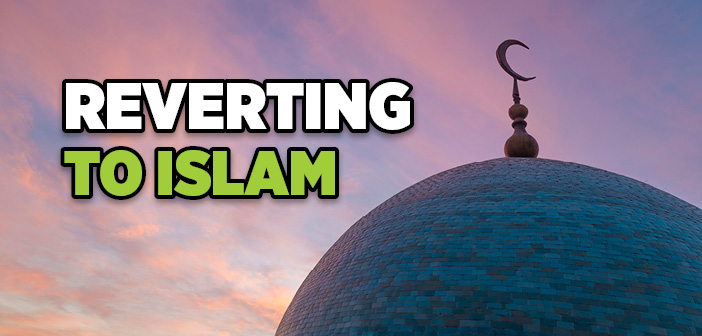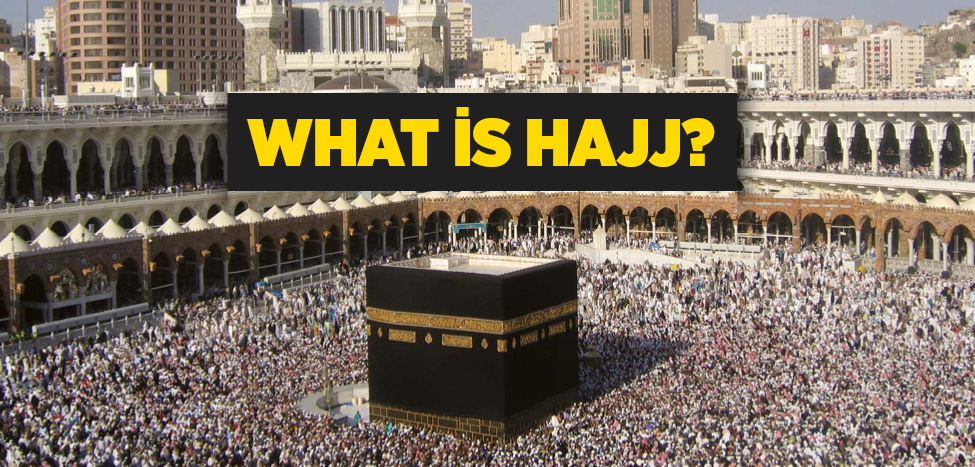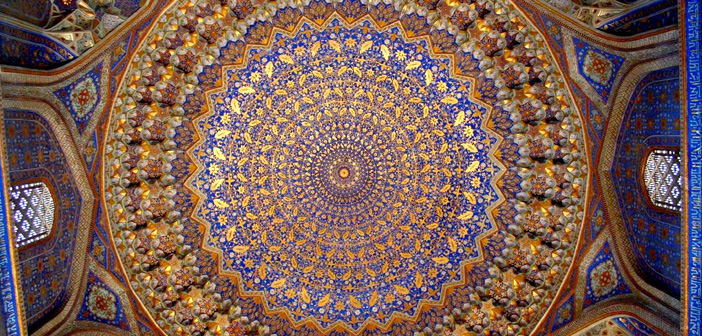What is hajj in islam? What does hajj means in islam?
Hajj is an Arabic word, which translates as pilgrimage. The fifth pillar of Islam is the pilgrimage to the Kaba in Mecca on specific dates during the month of Dhu al-Hijjah[1]. Hajj was made fard in the ninth year of Hijrah. The obligation of hajj is established by the Qur’an, the Sunnah of the Prophet and ijma (the consensus of the Muslim scholars). Allah says in the Qur’an, “Pilgrimage to the Sacred House is a duty to Allah for humankind, for him who is able to make the journey.”[2] Every Muslim (male and female) is required to make the pilgrimage to Mecca once in a lifetime. A person who is unable to do so due to illness, safety, ability or lack of finances, is excused. A person who has debts is not permitted to make pilgrimage until he or she has settled all debts.[3] There is no harm in children accompanying their parents for Hajj. However, it does not exempt them from having to complete Hajj when they become mature adults. It is not permissible for the believers to send someone to perform the hajj on behalf of them if they do not have a valid excuse. However, if they are not in a state to go to hajj, then they may send someone else as their representative. Normally a woman should be accompanied by a mahram (her husband or a close male relative), but according to the Shafi’i school of law, a woman who is not accompanied by her husband or a close male relative may set out on the journey of pilgrimage with a trustworthy group of women in order to perform the hajj that is obligatory upon her.
The pilgrimage season starts during the month of Shawwal, whereas, the actual pilgrimage is performed from the 8th to the 13th of Dhu al-Hijjah. If a pilgrim visits the Kaba at any other time of the year, they cannot perform hajj, but they can perform umrah (the Lesser Pilgrimage). The new Muslim should be aware that an umrah performed during the season of hajj is in fact, a part of the hajj. There are three methods of performing the pilgrimage and all require the completion of certain procedures, which, are known as the rites of hajj. The pilgrim should make his or her intention according to the pilgrimage he or she chooses to perform. The different types of pilgrimage are: 1. lfrad (hajj only); the pilgrim performs only the hajj. 2. Qiran (combined hajj); the pilgrim performs the hajj and the umrah together, in one ihram and without changing their ihram. 3. Tamattu (hajj with ease); this is performed as follows, during the season of hajj, the pilgrim first wears the ihram[4] for umrah and after it is completed, during the same season-before returning home- he/she wears the ihram once again and performs the obligatory hajj.
On their way to Mecca, when the pilgrims are arriving from various directions, they enter the state of ihram at a number of certain assembly points called miqāt in Arabic. The state of ihram means to cleanse the whole body; for the men it means to put on two pieces of unsewn white cloth, leaving the head bare and to wear footwear that does not cover the heels and for women it means to to cover everything but the face, feet and hands. The new Muslim should be aware that there are a number of acts that must be avoided once the state of ihram is entered into such as: a. hunting or killing a living thing; b. sexual pleasure of any kind; c. shaving or cutting the hair; d. trimming the nails; and e. wearing perfume, cologne, or cosmetics. All the acts and prohibitions of the state of ihram are there to help the pilgrim attain a higher state of mind. First, the pilgrim circumambulates the Kaba seven times. This is known as tawaff. This is followed by supplication and drinking from the water of Zamzam. The next ritual of Hajj is the sa’y, which is the walk between the hills of Safa and Marwa.[5] Pilgrims may first perform the tawaff and the sa’y immediately as they arrive or just before the eighth of Dhu al-Hijjah. On the day of the eighth of Dhu al-Hijjah, all pilgrims leave Mecca to spend the night at Mina, continuing their talbiyah (glorification of Allah) and quiet meditation. On the morning of the ninth of Dhu al-Hijjah, the pilgrims move from Mina to the plain of Arafat. Spending the day at Arafat is the most important rite of hajj. It is said that there is no hajj without the standing at Arafat. According to the Maliki school of law, the Zuhr and the Asr prayers are combined and shortened to two cycles each. The pilgrims remain standing until sunset, glorifying Allah, praying for the Prophet, for themselves, relatives, friends and other Muslims. If tired, they may sit down to rest occasionally. Females are allowed to remain seated during the entire stay at Arafat, if they wish. The pilgrims must leave Arafat soon after sunset without performing the Maghrib prayer. Instead, the salah of Maghrib is combined with the lsha prayer at Muzdalifah.[6] The pilgrims spend the night in this open field in prayer, rest and collecting pebbles to stone the Jamarāt, the three symbolic Shaitans, in Mina. After the Fajr prayer, which the pilgrims perform in congregation, they perform wuquf (Praying in the standing position) until daybreak. Then, they return to Mina, where they throw seven small stones at the largest of the Jamarāt. This is symbolic for the pilgrims to show that they resolve never to follow the path of evil and wrongdoing. After throwing the stones, the pilgrims offer a sacrifice of a sheep, goat, cow, or a camel at Mina. Since the day of the tenth of Dhu al–Hijjah is the day of Eid al-‘Adha, the Muslims all over the world also offer animal sacrifice. Following the sacrifice, pilgrims shave their heads or have a haircut. Their ihram is ended by the pilgrims changing into regular clothes. This is followed by the pilgrims leaving for Mecca to perform the obligatory tawaff, which is best performed on the day of sacrifice, but may be completed later on, if necessary. It is obligatory to pass the nights of the tenth and the eleventh of Dhu al-Hijjah at Mina. Every pilgrim is required to stone each of the three Jamarāt seven times. It is also Sunnah to pay a last visit to the Kaba for a farewell tawaff just before the departing from Mecca.
The new Muslim should know that the spiritual atmosphere during hajj is unlike any other a Muslim may experience. First of all, the pilgrim finally has the opportunity to see the birthplace of Islam and our beloved Prophet (peace and blessings be upon him). Being in the presence of the Kaba gives the feeling of being very close to Allah, may He be glorified and exalted, and sharing this experience with millions of other Muslims gives an overwhelming sense of the universal strength of Islam. The pilgrim must remember to maintain good behavior and relations with other pilgrims. In the Qur’an it says, “And whoever undertakes the pilgrimage in those (months,) shall on pilgrimage, abstain from lewd speech, from all wicked conduct, and from quarreling; and whatever good you do, Allah is aware of it.”[7] Therefore, for a successful hajj, a pilgrim must have piety, self-control and set a high standard of behavior for themselves. Moreover, upon returning from hajj, he or she should also strive to maintain this elevated code of behavior throughout their daily life.
Many Muslims desire to visit Medina, pray at the Masjid al-Nabi, offer greetings to the Prophet, which means to stand and greet him at his grave, and visit the many blessed places that relate to the life of the Prophet and his companions. It is true that the visit to Medina is not a part of the hajj rites, yet most pilgrims seem to feel that their mission is incomplete without a visit to Medina. Like Mecca, Medina is also considered haram (sacred), as it is the second holiest city of Islam. For the pilgrims the journey from Mecca to Medina is filled with emotions, as the hujjaj (pilgrims) make their way to Medina saying their greetings of salam and uttering the praises of the Prophet. It is customary upon arrival at the prophet’s mosque, to offer two cycle of Sunnah salah. Upon seeing the mosque of the Prophet (peace and blessings be upon him) and visiting other historical sites in Medina, the pilgrim is reminded of the sacrifices made by the early Muslims; this enhances the experience of the hajj and helps to strengthen their faith and conviction.
At this juncture, the new Muslim should note that no one is permitted to pray to the Prophet or prostrate to his grave. Occasionally, some people, out of love for the Prophet, unfortunately commit such unacceptable acts, without fully realizing the sinfulness of their actions. The Prophet Muhammad (peace and blessings be upon him) continuously warned us against all such acts; Muslims have been repeatedly informed that to express true love for the the Prophet, is to follow his Sunnah. Once the pilgrim is ready to depart from Mecca and Medina, he or she should commit themselves to follow the teachings of the Qur’an and the Sunnah for the rest of their life and to the best of their ability, make sure to avoid what is forbidden in Islam.[8]
On that point, let us note that all sincere Muslims ought to do their upmost best to try to follow the teachings of the Qur’an and the Sunnah of the Prophet (peace and blessings be upon him). For this purpose, new Muslims should acquaint themselves with the Qur’an and learn about the Prophet Muhammad, who is an example for all Muslims. The Qurʾanic verses that were revealed at different time and places for various reasons, cultivated the Prophet, as well as, educating the new Muslims in Arabia. For instance, by following the chronological order of the verses that were revealed, it is possible to see how the people around the Prophet were transformed from a Jahiliyya society to a new and pure society of Islam. Therefore, let us first briefly revisit the lifetime of the Prophet Muhammad (peace and blessings be upon him) in the following chapter, in order to give the reader an overview of his life, and, then go onto having a closer look at the Qur’an and the Sunnah.
[1] The 12th lunar month of the Muslim calendar.[2]. Q. 3:97[3].Q. 3: 97[4]It refers to the acceptance of the person, who intends to perform hajj and umrah, certain actions and behavior as prohibited to himself/herself which are permissible at other times for a certain period of time, in other words until the requirements of hajj and umrah are completed. It also includes the two pieces of cloth men wear at this point.[5]. To walk from Safa to Marwa four times, and to come back from Marwa to Safa three times between the hills of Safa and Marwa, this makes up seven shawts (circuits). This is one of the obligatory tasks of hajj and umrah.[6]. Muzdalifah is located halfway between Arafat and Mina.[7]. Q. 2: 197[8]. For more information please read, Hasan Serhat Yeter and Soner Duman, Fiqh 1: According to Maliki School of Law, Istanbul: Erkam Publication, 2015.
Source: Islam For New Muslims An Educational Guide,Assoc. Prof. Amjad M. Hussain, Erkam Publications





